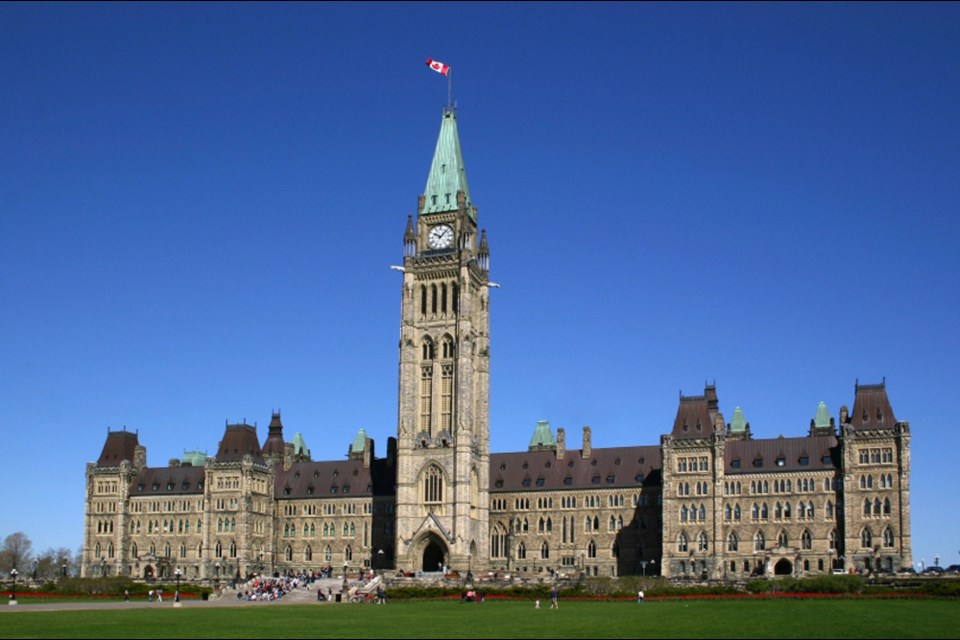THUNDER BAY — A Thunder Bay MP says he's "ticked off" with a proposal to remove one federal riding from Northern Ontario while redrawing boundaries to create larger ridings include a thinly-populated new one stretching across the Far North from Quebec to Manitoba.
If the plan of the Federal Electoral Boundaries Commission for Ontario becomes final, the region will have only nine seats in the House of Commons, compared with 12 seats in 1974.
Population data is a key consideration in the drawing of riding boundaries, and the North's population continues to grow at a much slower pace than the rest of the province.
But Marcus Powlowski, who represents Thunder Bay-Rainy River, calls the recommendations an assault on the democratic rights of the people of Northern Ontario.
In the case of his own riding, he said, "It's hard enough looking after Fort Frances and Rainy River. Those places are a long way away. But if you add another 40,000 people out in Kenora, Dryden, that area...for all [residents] it's going to be that much harder to get the attention of your member of parliament. Our office won't become any bigger as a result of this."
Powlowski said the size of the new Kenora-Thunder Bay-Rainy River riding would make it virtually ungovernable.
The Liberal MP also suggested that people in the Kenora area have different interests from people in Thunder Bay.
"This smacks to me of decisions made in Toronto by people who really don't understand Northern Ontario," Powlowski said.
Thunder Bay-Superior North MP Patty Hajdu, who's currently in New Zealand to sign an Indigenous collaboration agreement, has not yet commented on the proposed changes.
In an interview in February, Hajdu said she expected that considerations such as the geographic size of ridings in the North would be important as the commission worked through its independent process.
At the time, the commission said its work would be a balancing act "that considers communities of interest or identity along with a district's history and geographic size."
Kenora Conservative MP Eric Melillo issued a brief statement Wednesday expressing concern about the plan to remove a seat from Northern Ontario.
He pointed out that the recommendations still have to be finalized, and that "those who want to contribute to the conversation" should ensure their voices are heard in the coming weeks and months.
Thunder Bay Mayor Bill Mauro said he's sure many residents of the North will be concerned.
One worry, he said, is that if the federal riding boundaries are changed, Ontario may follow suit at some point by adjusting provincial riding boundaries in a similar way.
Other MPs across Northern Ontario have also spoken out against the planned changes.
Charlie Angus, the NDP member for Timmins-James Bay, called the plan "a kick in the teeth to the fundamental principle that people in the isolated north have a right to be able to interact with and receive service from their MP offices."
Angus also criticized the fact that the report was released as northern municipalities head toward local elections, saying this means "municipal officials and councils will be excluded from the public comment period. Talk about stacking the deck."
During the last redistribution, in 2012, the electoral boundaries commission said that if it applied population formulas strictly, the North would have only eight seats.
But it took feedback into account and decided that it should retain 10 ridings because of its vast geography.
Liberal Nickel Belt MP Marc Serré observed that the 2012 commission had a representative from Northern Ontario, but this time it doesn't.
Regardless of who's involved in the process, the fact that the regions of Ontario are not growing at the same pace makes it increasingly difficult to maintain ridings whose populations are well below average.
Thunder Bay-based public policy economist Livio Di Matteo said the North is the victim of a "tide of demographic change."
While the region's population grew by only two or three per cent in the last decade, in Southern Ontario the increase was 10 to 11 per cent.
As the North's population declines relative to the rest of the province, "over time our influence is diminishing, and that's a concern. You can try to maintain influence by sort of enshrining a minimum number of seats, but that in itself requires representation to accomplish, and we don't seem to have that even with cabinet ministers [being] from the area."
Di Matteo noted that the commission works at arms-length from the political process.
Besides the loss of representation for the North in the House of Commons, he feels expanding the Thunder Bay-Rainy River riding to include Kenora might be an issue for residents of that area.
"I'd be concerned about being overwhelmed by Thunder Bay voters," he said.
The commission will accept public input at a series of in-person and virtual hearings in September and October.
In Northwestern Ontario, no in-person hearing is scheduled for Thunder Bay, but sessions will be held in both Kenora and Sioux Lookout.
A virtual hearing for Northern Ontario will take place on Oct. 26.
Individuals wishing to participate must complete a Public Hearing Participation Form by Sept. 25.
More information is available online.
